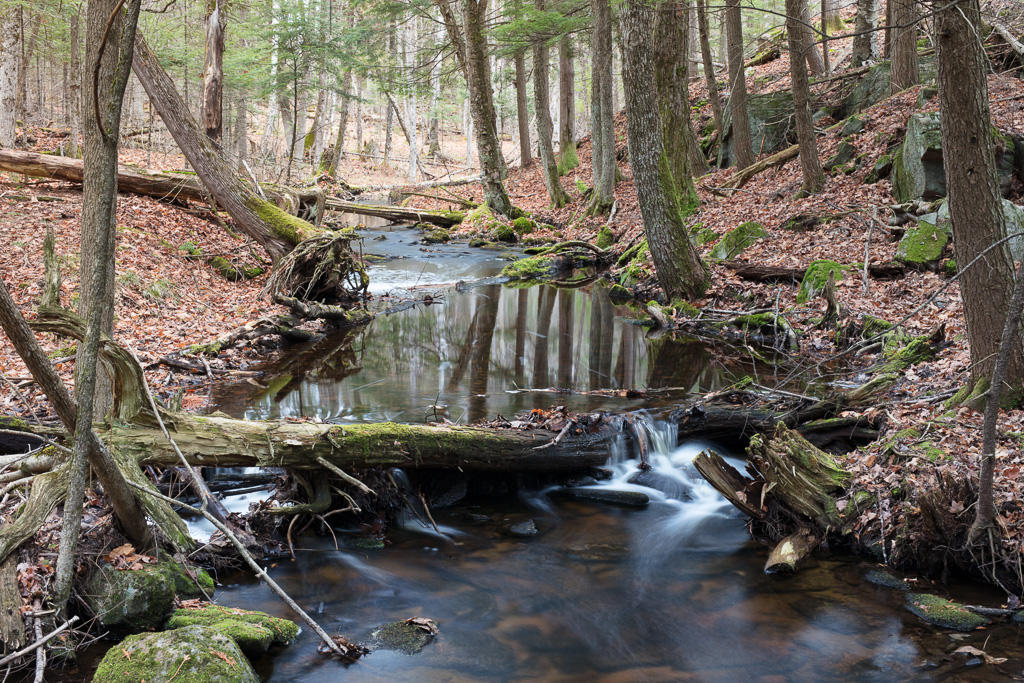
This is an appropriately autumnal photo I shot at the Barnum Creek Nature Reserve just weeks after it opened to the public in 2020. Presumably, the water in this image is Barnum Creek. It is located in the Haliburton Highlands of Ontario in the prosaically named township of Dysart et al. Yes, Dysart et al. The et al appears on all the official signs.
If I were a philosopher (I’m not, but if I were) I might wonder about what it is that makes a creek a creek. When I talk about Barnum Creek, what defining feature gives it its distinctive creekiness? It can’t be the water. In a variation on a theme by Heraclitus (you can’t step in the same river twice), the water in a creek is never the same from one instant to the next. This photo captures an instant in time, but if I released the shutter again a few minutes later, most of the water in the photo would have been replaced by fresh water flowing from upstream. Some of the water in this photo might go on to Kashagawigamog Lake then into Lake Ontario, St. Lawrence River, and the Atlantic Ocean. Some of it might evaporate and quickly recirculate through the hydrologic cycle. And some of it might sink down to the water table and lurk in deep aquifers for hundreds of years. I can’t say for certain what would happen to any given water molecule, but I can say for certain that none of it would stick around to pose for another photograph.
What is true of the water is true, too, for the leaves, the soil, the trees, even the rocks. Like the water, it all flows, but on a different time scale. Whatever we call Barnum Creek and fix with pins to our map is only a provisional naming. I’m certain indigenous people living here named it something else. And people yet to come will name it something else again. And then it will vanish.